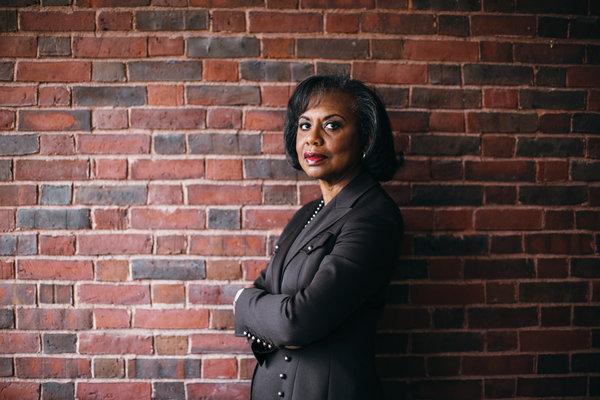You’re reading In Her Words, where women rule the headlines.
Sign up here to get it delivered to your inbox. Let me know what you think at dearmaya@nytimes.com.
“There’s not much that can be done about the past, but we can rewrite our future.”
— Shirley Manson, lead singer of the band Garbage, on creating gender balance on stage at music festivals
Like many, I spent two hours last week watching Beyoncé burn past all logical boundaries of musical performance in her new Netflix documentary, “Homecoming,” about her elaborate 2018 Coachella set. It was an epic show — so much so that fans nicknamed the whole event Beychella — but a rare one. She was the first black woman to headline Coachella in its 20-year history.
Beyoncé is just one of several female artists — Ariana Grande, Cardi B, Kacey Musgraves, Halsey, Billie Eilish — dominating the music scene these days with No. 1 albums and songs, raking in awards and breaking records while they’re at it. But as we enter music festival season, you’d never know it.
Female artists are usually starkly absent from headlining spots and are often a fraction of overall lineups.
This month at Coachella, women made up 35 percent of acts, the same as last year, according to Book More Women, a group that manipulates posters of major festivals to show how few women were playing. Further, according to Nielsen, festivalgoers are majority female.
Once upon a time (the 1990s), a salve to male-dominated music festivals was Lilith Fair, a woman-centric tour founded in part by the singer-songwriter Sarah McLachlan. (It was the top-grossing festival in 1997, bringing in $16 million in North America.)
McLachlan, reminiscing about what prompted her to start the event, told Glamour in 2017 that while looking at the festival scene, she thought: “Wow, they’re just full of men. And yet there’s all this amazing music being made by women right now. So why is that not being represented?”
Last year, as a rallying cry against festivals where reports of assaults and rapes were widespread, the Statement Festival in Sweden billed itself as the world’s first music festival exclusively for women, transgender and nonbinary people — a “safe space” festival, if you will.
But separating female acts from mainstream events is not the answer, some say. And demand for gender balance has been building.
Starting last year, more than 100 festivals have agreed to aim for 50/50 gender parity by 2022 as part of an initiative called Keychange, introduced to address gender inequality at festivals.
Here’s a look at how gender disparities played out on stage in 2018.
______
19 percent
That’s how many female acts made up the average lineup in 19 festivals, according to an analysis by Pitchfork. That’s an increase from 14 percent in 2017. The percentage of groups with at least one female or nonbinary member, held relatively steady at 11 percent.
______
38 female artists
That’s how many were on the bill for Lollapalooza out of 183 total acts, none of them headliners.
______
7 women or women-led groups
That’s how many were listed among 40 artists in the first 10 rows of Bonnaroo’s poster.
______
3 festivals
That’s how many reached gender parity last year, according to Pitchfork’s analysis. In 2017, zero made it.
Sign up here to get future installments of In Her Words delivered to your inbox.
______
What else is happening
Here are five articles from The Times you might have missed.

Anita Hill’s name was trending on Twitter on Thursday as many women said they supported her — and, by clear implication, not Joseph R. Biden Jr.CreditElizabeth D. Herman for The New York Times
-
“I will be satisfied when I know there is real change and real accountability and real purpose.” Joe Biden, who announced he’s running for president, expressed regret to Anita Hill, above, but she says it’s not enough. [Read the story]
-
“Me-OW! It’s the end of the catfight.” Popular for over a century, a sexist term has fallen out of favor in the #MeToo era. [Read the story]
-
“What are the implications of a society in which women earn more than men?” Stephen Moore, President Trump’s planned nominee to the Federal Reserve, has derided and mocked women in columns and appearances. [Read the story]
-
“It’s like playing hockey in heaven.” In a remote Himalayan town in northern India, a women’s ice hockey team comes together. [Read the story]
-
“If I’m shining, everybody gonna shine.” How Lizzo — a flute-playing, twerking, social-media-dominating rapper and singer — created a pop anthem as irresistible as she is. [Read the story]
______
From the archives, 1999: ‘Boneheaded sexism is on the rise throughout the rock scene.’
I had tickets to Woodstock ’99, but I was a teenager, and my parents refused to let me go. They were right (again). The event turned out to be an “orgy of lewdness tinged with hate,” the music critic Ann Powers wrote in a Times piece that summer.
Multiples rapes were reported at the festival, which Powers said was packed with “rampant displays of vicious male behavior.”
This all happened during another “year of the woman” in pop, Powers wrote. (Lilith Fair ended its run that very month.)
“With all this evidence of ‘girl power’ still abounding, what are those female rock fans doing getting clobbered, metaphorically, by the boys?” she wrote. “Foremost is the fact that so many young women consider the struggle for equality over.”







